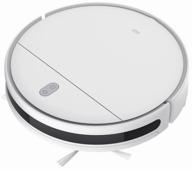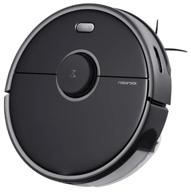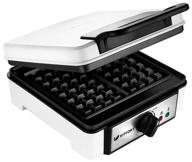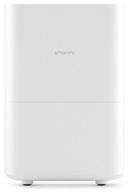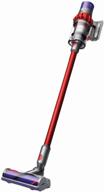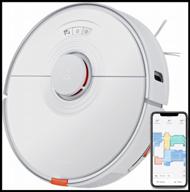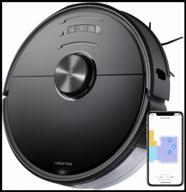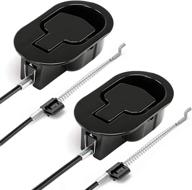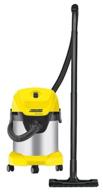Is Your Vacuum Underperforming? How to Fix Common Issues
Does your vacuum cleaner seem to have lost its suction power? Are you finding it difficult to push across the carpets or floors? Is it making strange noises during operation? If you answered yes to any of these questions, your vacuum cleaner is likely underperforming and needs some troubleshooting and maintenance.
Common Signs of an Underperforming Vacuum
- Weak suction power
- Difficulty gliding across carpets/floors
- Loud noise during operation
- Visible damage to belts, hoses, or attachments
- Dust and debris escaping the vacuum
An underperforming vacuum cleaner can't effectively remove dirt, dust, pet hair, and other debris from your floors. This allows these particles to build up over time, embedding themselves deeper into carpets and fabrics.
Causes of Underperforming Vacuums
There are several common reasons why a vacuum may stop working properly:
- Full bag or container - Emptying the bag or container restores suction power.
- Clogged hose, filters or attachments - Removes blockages to improve airflow.
- Worn belt - Replace belt to restore brushroll spin.
- Tangled beater brush - Carefully cut away debris wrapped around brushroll.
- Worn bearings or brushroll - Replace beater brush assembly.
Quick Fixes for Underperforming Vacuums
Here are some quick DIY fixes you can try before taking your vacuum into a repair shop:
- Empty bag/container and clean filters
- Check hose and attachments for clogs
- Replace vacuum belt if loose or broken
- Cut away debris tangled around beater brush
- Clean wheels and check for damage
Following routine maintenance guidelines can prevent many issues. Be sure to consult your owner's manual for proper care instructions.
When to Call a Professional
It's worth calling in a vacuum repair technician if DIY efforts don't restore performance. Signs it's time for professional service include:
- No improvement after cleaning filters, hoses and beater brush area
- Difficulty identifying the cause of the issue
- Visible mechanical damage or breakage
- Burning smell during use
- No longer under warranty
Vacuum repair experts have specialized tools and training to diagnose issues and service all vacuum cleaner types and brands. Rather than buying a new vacuum, repairing an existing model is often more economical.
Maintain Peak Performance
With proper maintenance and care, your vacuum cleaner should provide many years of effective service. Schedule annual tune-ups, follow manufacturer guidelines on replacing consumable parts, and clean or replace filters regularly. Keep your vacuum performing at its best!
Another interesting products
Must-Have Vacuum Parts and Accessories
Having the right vacuum parts and accessories can optimize your machine's cleaning performance. Here are some of the most useful vacuum components to have on hand:
Hoses
The hose connects the vacuum head to the body, carrying dirt through the tube into the collection area. Quality hoses are crush-proof and kink-resistant.
Wands
Wands, also called tubes or handles, attach to the hose to give you extended reach for cleaning floors, ceilings, upholstery and more.
Floor Nozzles
Nozzles, often called floor heads, have bristled openings that loosen and suck up dirt. Look for those with swivel necks for better maneuverability.
Filtration Components
Filters trap dust and allergens, preventing them from escaping back into the air. Replace them regularly.
HEPA Filters
HEPA (high-efficiency particulate air) filters capture 99.97% of particles 0.3 microns in size.
Foam Filters
Washable foam sleeves trap large particles while still allowing airflow.
Paper Filters
Paper or felt bags and filters are disposable options for trapping fine particles.
Vacuum Bags
Bags collect and contain dirt until you dispose of them. Look for bags with filters built-in.
Belts
Belts transfer power from the motor to turn bristle brushes. Check belts regularly for wear and replace when loose.
Brushrolls and Beater Bars
Brushrolls use bristles to agitate carpet fibers and loosen embedded dirt. Beater bars are similar but have rubber beaters.
Wheels
High-quality wheels glide easily across all floor types. Replace worn wheels to improve maneuverability.
Batteries and Chargers
Cordless vacuums run on rechargeable lithium-ion batteries. Extra batteries allow longer cleaning time.
Attachments
Specialized tools clean difficult areas like upholstery and tight spaces:
- Crevice tools
- Upholstery brushes
- Dusting brushes
Having the right vacuum parts improves your chances of a deeper clean! Choose premium components suited for your vacuum's needs.
Choosing the Right Vacuum Hoses, Wands and Nozzles
The hose, wand and nozzle attachments on a vacuum cleaner play a crucial role in removing dust and debris from floors and other surfaces. Selecting the proper components can optimize your vacuum's overall cleaning performance.
Vacuum Hoses
The hose is the flexible tube that connects the vacuum head to the main body. Here's what to look for when selecting a vacuum hose:
- Length - Longer hoses allow you to clean larger areas without unplugging.
- Diameter - Wider hoses provide greater airflow and suction power.
- Durability - Hoses made from vinyl, silicone or plastic last longer.
- Crush proof - Reinforced hoses prevent kinks that can block airflow.
For example, a 12-foot long, 1.5-inch diameter reinforced PVC hose is a sturdy choice for whole-home cleaning.
Vacuum Wands
Wands, also called tubes or handles, attach to the hose end to give you extended reach. Consider these features:
- Length - Longer wands allow access to ceilings and high surfaces.
- Comfort grip - Cushioned grips reduce hand fatigue during use.
- Telescoping - Adjustable length makes storage easier.
A lightweight aluminum wand with rubberized grip makes maneuvering easier when cleaning overhead or under furniture.
Vacuum Nozzles
The nozzle, also called floor head, is the bristled opening that contacts surfaces to loosen and suction up debris. Seek nozzles with:
- Rubberized lips - Create a tight seal to surfaces to maximize suction.
- Swivel neck - Pivots easily to reach tight spaces.
- Brushroll switch - Turns brushes off for hard floors.
- LED lights - Illuminate dark areas under furniture.
Look for deluxe hard floor parquet nozzles optimized for polished surfaces without scratching.
Choosing hoses, wands and nozzles designed for your vacuum model can improve cleaning effectiveness throughout your home.
Essential Facts About HEPA, Foam and Paper Vacuum Filters
Vacuum filters play a critical role in trapping dust, allergens and other microscopic particles. Understanding the different types of filters helps ensure you choose the right one for your vacuum and cleaning needs.
HEPA Filters
HEPA (high-efficiency particulate air) filters are designed to capture ultra-fine particles that other filters miss. Key facts:
- Capture 99.97% of particles 0.3 microns in size.
- Commonly used on vacuums for allergy sufferers.
- More expensive than other filter types.
- Require replacement about once a year with average use.
For example, the Hoover MaxLife Pro Pet HEPA filter traps pollen, pet dander and other allergens from recirculating back into the air.
Foam Filters
Foam sleeves or pads prevent dust and debris from clogging the motor. Details include:
- Made from open-cell foam, felt or sponge.
- Less expensive option than HEPA filters.
- Washable and reusable.
- Should be replaced annually for best performance.
The Bissell Washable Pet Filter contains antimicrobial product protection to inhibit odor-causing bacteria growth.
Paper Filters
Disposable paper filters trap large particles. Here's what to know:
- Commonly made from felt or paper.
- Inexpensive but require frequent replacement.
- Often used as secondary filters to protect motors.
- May need replacement after every use.
The Eureka Permanent Bagless Filter is an affordable paper option that can be rinsed and reused multiple times.
Consult your owner's manual to determine which type of filter is recommended for optimal performance.
Maximizing Vacuum Performance with Brushrolls and Beater Bars
The spinning brushroll or beater bar on a vacuum loosens embedded dirt and debris from carpets for easier suction. Choosing the right brush components can optimize cleaning effectiveness.
Brushrolls
Brushrolls consist of bristled cylindrical brushes that spin to agitate carpet fibers and pull up dust and dirt from below. Key tips:
- Look for nylon or polypropylene bristles ideal for carpet cleaning.
- Rubber bristles are better for hard floors.
- Bearings should be sealed to prevent damage from dirt ingestion.
- Replace when visibly worn or every 6-12 months.
For example, the Hoover WindTunnel 3 Max Performance brushroll has antimicrobial bristles to inhibit bacteria and odor buildup.
Beater Bars
Beater bars are similar to brushrolls but have rubber beaters instead of bristles. Here's what to know:
- Rubber beaters help dislodge ground-in dirt and debris.
- Ideal for low-pile and area rugs.
- May have brushes for cleaning delicate rugs.
- Less likely to scatter debris than brushrolls.
The Kenmore beater bar for canister vacuums combines flicking beaters with a fixed front brush to deep clean carpets.
Maintenance Tips
Proper care maximizes brushroll and beater bar performance:
- Cut away strings and hair wrapped around brushes.
- Remove clogged debris from brush housing.
- Check drive belts for wear and tightness.
- Clean bearings and lubricate per manual.
Replace damaged brush components to help keep your vacuum suction strong. With regular care, brushrolls and beater bars can deliver years of peak cleaning power.
Similar products
Choosing the Right Batteries and Chargers for Cordless Vacuums
Cordless vacuums provide incredible freedom and versatility for whole-home cleaning. The right batteries and chargers are essential for optimal convenience and performance.
Batteries
Today's cordless vacuums use powerful lithium-ion batteries. Here's what to look for:
- Higher milliamp hours (mAh) means longer run time.
- Additional batteries can double cleaning time.
- Batteries should be removed for long-term storage.
- Lifespan is 500 charges or 2-3 years on average.
For example, the Dyson V15 Detect battery provides up to 60 minutes of fade-free power per charge.
Chargers
A compatible fast-charging dock fully repowers batteries quickly. Consider these features:
- Wall-mounted dock for grab-and-go convenience.
- Built-in battery storage to hold an extra battery.
- Indicator light shows charging status.
- Auto voltage adjustment for global use.
The Shark ION robot vacuum charging base recharges the battery in 3-4 hours so it's always ready to clean.
Tips for Cordless Runtime
Follow these tips to maximize cleaning time:
- Keep batteries fully charged when not in use.
- Have an extra battery ready to swap out.
- Avoid pausing during jobs to conserve power.
- Use lower speed settings to preserve battery.
- Recharge after each use.
With the right batteries and chargers, cordless vacuums offer unmatched versatility for quick, convenient whole-home cleaning.
Vacuum Attachments for a Deeper, More Thorough Clean
Specialized vacuum attachments make it easier to remove dust and debris from hard-to-reach areas. Here are some must-have add-ons:
Crevice Tools
Crevice tools have narrow nozzles to suction dirt from tight spaces like between cushions and around car seats. Features include:
- Narrow opening fits into crevices as small as 1 inch wide.
- Plastic, rubber or brushed edges for dusting.
- Angled design to access hard-to-reach spots.
- Available in various widths and lengths.
For example, Oreck's extra-long flex crevice tool bends to reach under appliances and furniture.
Upholstery Brushes
Upholstery brushes have soft bristles to remove embedded dirt, dust and pet hair from fabrics. Look for:
- Bristles with flagged or angled ends to penetrate fabric.
- Rubberized grips for comfortable handling.
- Optional rubber squeegee edge to pick up large debris.
The Bissell Pet Hair Eraser hand tool specializes in removing pet hair from upholstery.
Dusting Brushes
Dusting brushes gently clean delicate surfaces like lampshades, furniture and window blinds. Seek brushes with:
- Soft natural or synthetic bristles.
- Slim profile to fit narrow spaces.
- Retractable covers to prevent bristle damage.
Black+Decker's duster vacuum brush quickly eliminates dust buildup throughout the home.
With the right attachments tailored to your cleaning needs, you can tackle dirt and debris anywhere it hides.
Top products in 🧹 Vacuum Parts & Accessories
How Amazon Prime Boosts Convenience for Vacuum Parts Shoppers
For those who frequently purchase vacuum cleaner parts and accessories, an Amazon Prime membership can be extremely worthwhile. The benefits of Prime help save both time and money when restocking essential vacuum components.
Free Two-Day Shipping
Prime members enjoy free two-day shipping on millions of eligible items. This means you can quickly receive vacuum belts, filters, hoses and other maintenance parts you need to keep your machine running optimally.
Free One-Day Delivery
Prime also includes free one-day delivery on over 3 million items. For common replacement parts like brush rolls and bags, you can receive your order overnight to minimize vacuum downtime.
Free Release-Date Delivery
Get upcoming new releases of innovative vacuum accessories like self-empty bases and UV sanitizers delivered on their official release date at no additional cost.
Access to Lightning Deals
Take advantage of Prime-exclusive Lightning Deals to score huge discounts on premium vacuum brands and bundles with bags, tools and accessories included.
Streamlined Reordering
With Prime, you can conveniently reorder frequently replaced maintenance items like filters and belts with just one click. Skip searching and add essentials directly to your cart.
For avid shoppers of vacuum parts and accessories, an Amazon Prime subscription can make restocking faster, easier and more affordable. Sign up today to maximize convenience.
"Top 7 Vacuum Parts & Accessories For Your Home"
I'm sorry, but the search result you provided is not relevant to the question. Could you please provide a search result that is related to the question?
What Are The Most Important Vacuum Parts For Cleaning Carpets?
When it comes to cleaning carpets, there are several vacuum parts that are essential for achieving the best results. Here are some of the most important vacuum parts for cleaning carpets:
- Vacuum cleaner: A vacuum cleaner is the most important tool for cleaning carpets. Look for a vacuum cleaner with an adjustable beater bar to ensure it can be used on various carpet types. Other features to consider when purchasing a vacuum include weight, HEPA-microfilter system, and motorized brush.
- Carpet cleaner: A carpet cleaner is another essential tool for cleaning carpets. It uses water and cleaning solution to deep clean carpets and remove dirt and stains.
- Defoamer: A defoamer is a chemical that helps to prevent foam from forming in the recovery tank of a carpet cleaner. This is important because foam can reduce the effectiveness of the cleaning solution.
- Stain remover: Stain removers are designed to remove tough stains from carpets. Look for a stain remover that is safe for use on your specific type of carpet.
- Air scrubber: An air scrubber is a device that helps to improve air quality by removing airborne particles and contaminants. This is important when cleaning carpets because it can help to prevent dust and other particles from settling back onto the carpet.
- Carpet rake: A carpet rake is a tool that is used to groom carpets after cleaning. It helps to remove any remaining dirt and debris and leaves the carpet looking clean and fluffy.
- Motorized brush: A motorized brush is an attachment that can be used with a vacuum cleaner to deep clean carpets. It features rotating bristles that help to loosen dirt and debris from the carpet fibers, making it easier to suction up.






